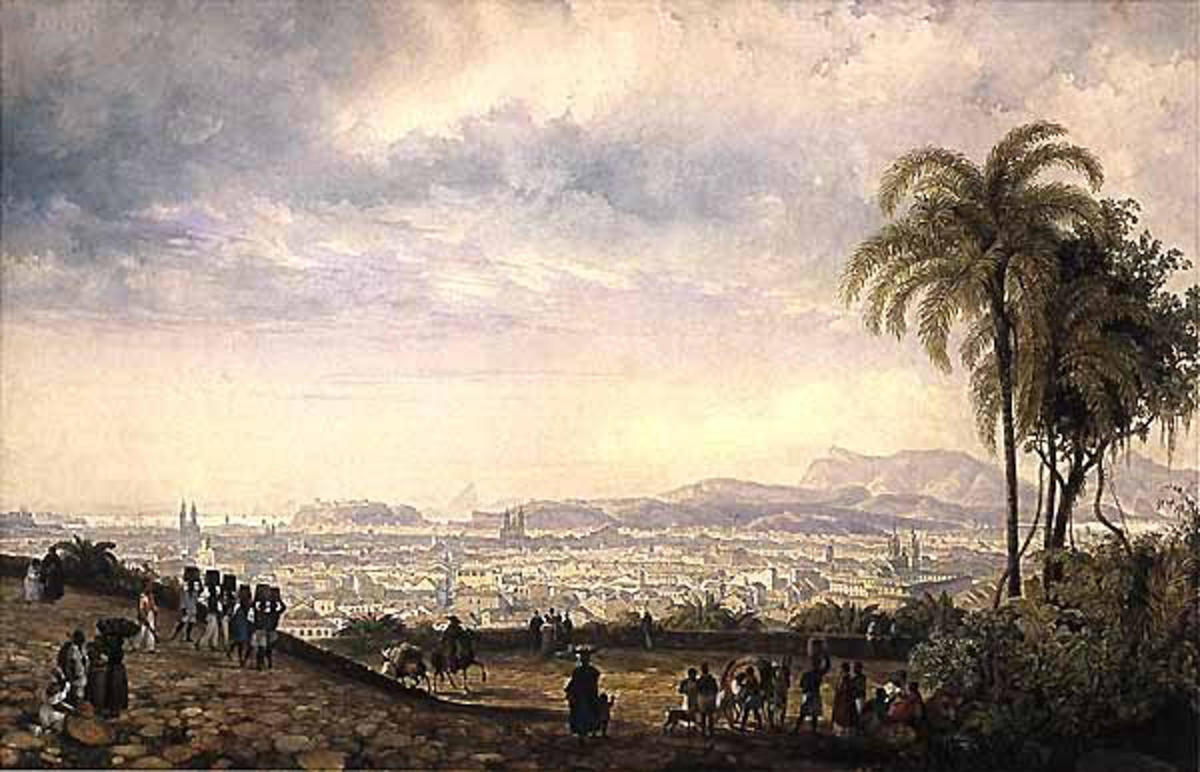Source

Source: Original: Academy of Fine Arts, Vienna, Inv.-Nr. 13.846. Image: The Picture Art Collection/Alamy Stock (Photo Image ID: MNP54T)
The son of a Viennese shopkeeper, Thomas Ender (1793–1875) managed to be educated as an artist in the Imperial-Royal Academy of Fine Arts. Having won a prize upon graduation in 1816, Ender then enjoyed the patronage of the Academy’s curator, Prince Clemens von Metternich. Metternich was also Austrian State Chancellor and Foreign Minister, and his influence secured for Ender a position on a scientific expedition to Brazil in 1817. The expedition accompanied the wedding party of Archduchess Leopoldine, who was to marry Dom Pedro, the heir to the Portuguese and Brazilian thrones. During his eighteen-month stay in Brazil, Ender created hundreds of drawings and watercolors. In this watercolor panorama of Rio de Janeiro, Ender preserves a sense of the city’s tropical landscape and atmosphere yet keeps the focus on the grand colonial cityscape and its diverse inhabitants. Among the human figures are several laborers and market-women of African descent, part of the great African diaspora brought about by the transatlantic slave trade, which was still legal in Brazil and the South Atlantic in 1817. (In most countries north of the Equator, the slave trade had been abolished between 1807 and 1817). Some of those depicted here may have been free people of color, but most would still have been enslaved.

Source: Original: Academy of Fine Arts, Vienna, Inv.-Nr. 13.846. Image: The Picture Art Collection/Alamy Stock (Photo Image ID: MNP54T)
© Academy of Fine Arts, Vienna / The Picture Art Collection / Alamy Stock Photo